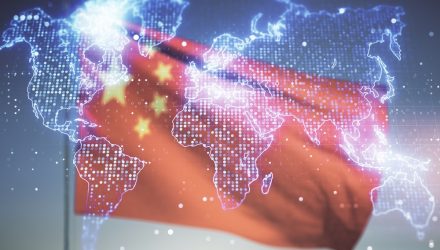When it comes to the second-largest economy, getting governmental support is paramount to furthering innovation. That would help propel exchange traded funds (ETFs) like the KraneShares China Innovation ETF (KGRO).
This is one of the reasons highlighted by the World Economic Forum’s Innovator Communities. Government subsidies can go a long way in helping to fund innovation projects that could open up opportunities in technological advancements from robotics to clean energy alternatives.
“A prominent factor that stood out among responses from the members of the Innovation Communities was a robust governmental support mechanism, exemplified by the state’s top-level design policy,” a World Economic Forum blog said. “This aspect underscores the need for start-ups to diligently monitor the Chinese government’s resource allocation priorities and seize opportunities to align and expand their businesses accordingly.”
When it comes to planting seeds of innovation, one area is to focus on the growth of start-ups. Enterprising entrepreneurs, paired with the help of China’s government, can continue pushing creative boundaries when it comes to developing the technology of the future.
“The Chinese government plays a more pivotal role compared to other counterparts, necessitating entrepreneurs and start-ups to comprehend the market through a broader lens,” the blog noted further. “For example, venture capitals and funds in China are mainly from government-related sources, which will push some areas to develop faster than the others.”
An Active, China Innovation-Focused Fund
When it comes to identifying investment opportunities in ETFs that target China’s innovation ecosystem, KGRO offers a compelling option. KGRO is an actively managed ETF, offering dynamic exposure that allows for portfolio changes when market conditions warrant adjustment.
Furthermore, KGRO is essentially a fund of funds that offers exposure to various KraneShares ETF products:
- The KraneShares CSI China Internet ETF (KWEB)
- The KraneShares MSCI All China Health Care ETF (KURE)
- The KraneShares MSCI China Clean Technology ETF (KGRN)
- The KraneShares CICC China 5G & Semiconductor ETF (KFVG)
- The KraneShares SSE STAR Market 50 Index ETF (KSTR)
If investors want more targeted exposure to these individual funds, they can solely allocate capital to each fund. The active component of KGRO allows the fund to be more fluid in the market, which means that its portfolio managers can adjust holdings based on market conditions.
With big tech getting much of the market fanfare in 2023 thus far, it’s no surprise that KWEB comprises the majority of the fund’s holdings (over 30% as of August 11). KURE, which occupies 24% of the fund’s assets, follows next.
For more news, information, and analysis, visit the China Insights Channel.

